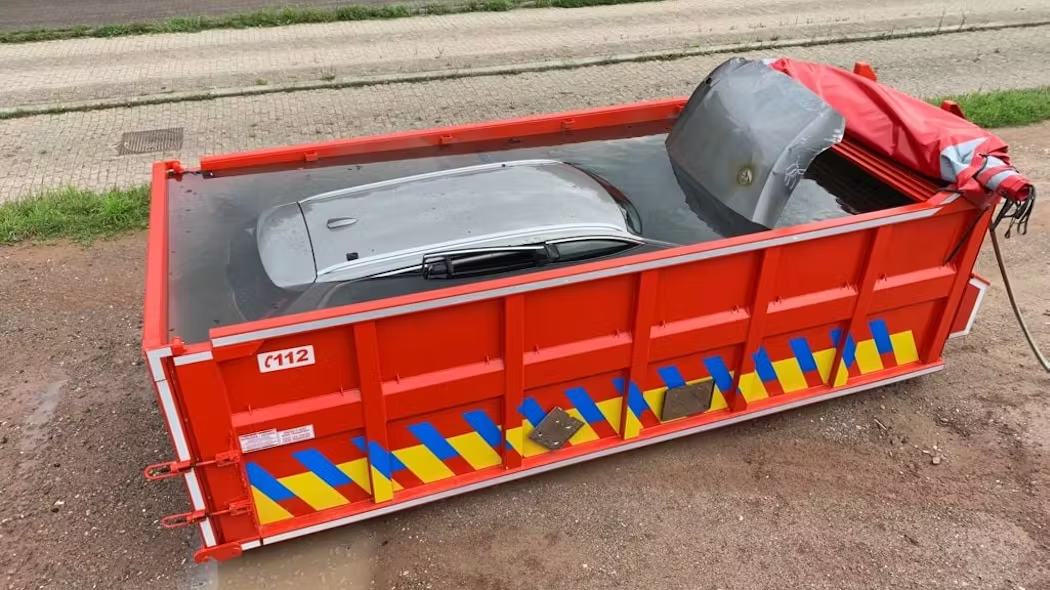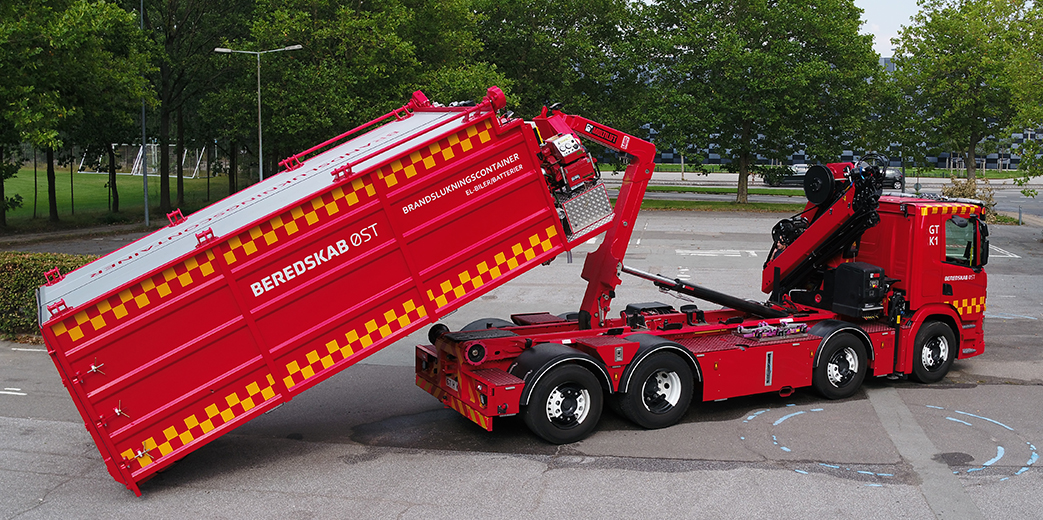It's pretty clear from the comments that people don't really know anything about lithium batteries. OP actually knows what their talking about for the most part.
First, lithium batteries contain little to no elemental lithium. Just because the molecule has lithium in it doesn't mean it'll react violently with water. Think about table salt. Just because elemental sodium reacts violently with water doesn't mean table salt will.
Secondly, it's not an electrical fire. A lithium battery fire is an exothermic, self sustaining chemical reaction.
Thirdly, that chemical reaction is self oxidizing, so you can't just smother the fire to put it out.
The only way to stop a lithium battery fire is to either let it burn itself out (which is bad because the smoke is highly toxic), or cool it down enough so it can't self sustain. Water is very good at this.

